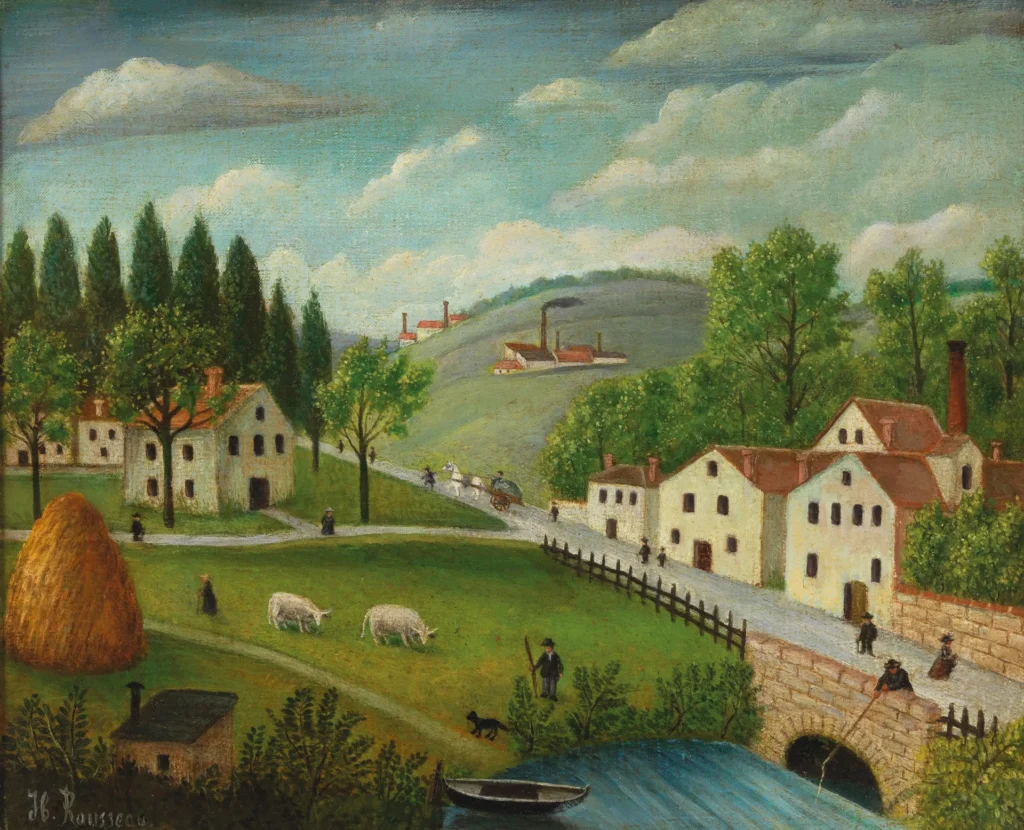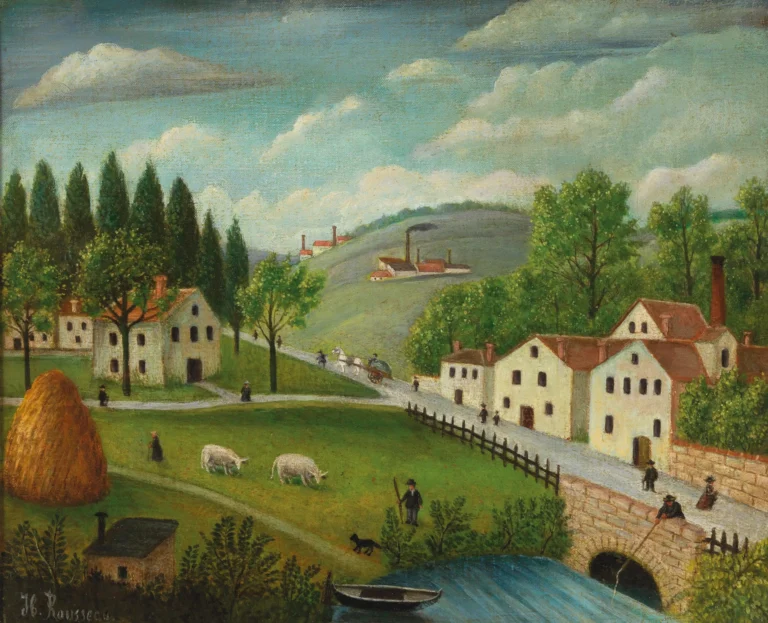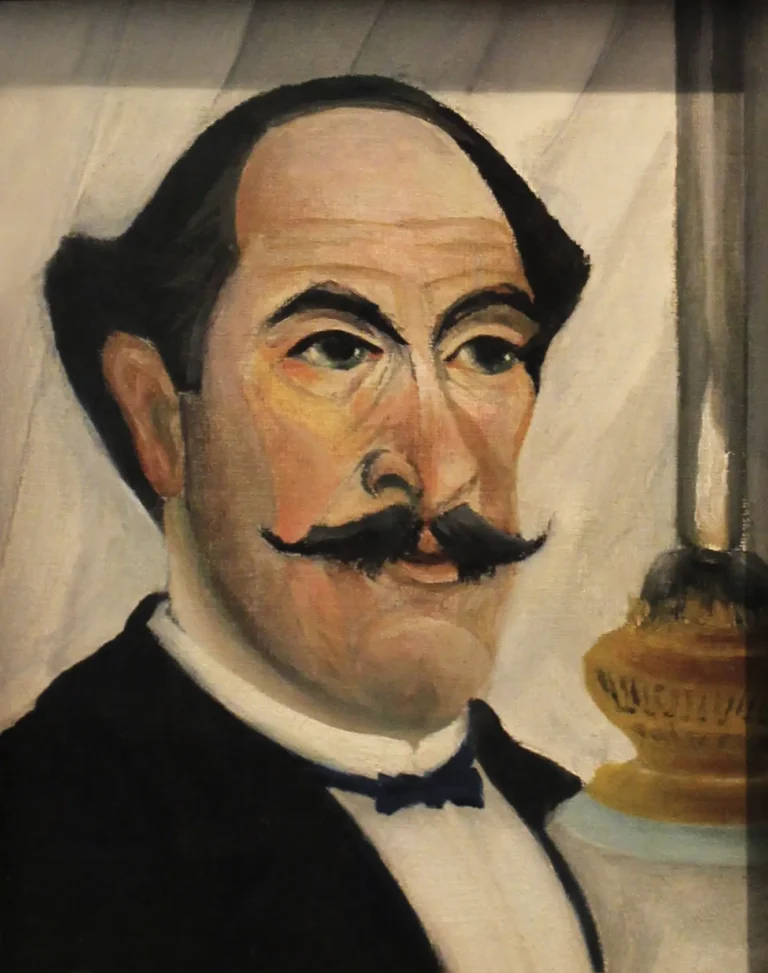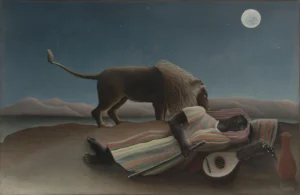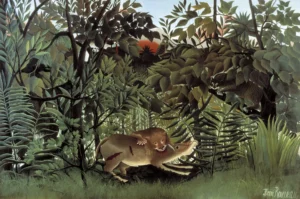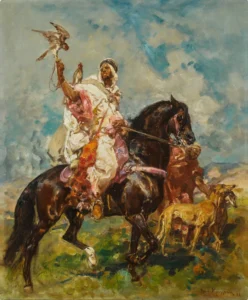Pastoral landscape with stream, fisherman and strollers (1875–1880)
Created by the self-taught French post-impressionist Henri Rousseau, Pastoral landscape with stream, fisherman and strollers captures an enchanting pastoral scene characterized by a tranquil stream populated by a solitary fisherman and leisurely strollers. Rousseau's naive style infuses this idyllic landscape with a dreamlike quality, showcasing his unique artistic vision and establishing a foundation for future avant-garde movements, including the Fauves. The painting measures 38 x 46 cm and reflects the simplicity and profound beauty that Rousseau is celebrated for.
1875-1880
About the Artwork
Did You Know
Liked what you see? Add it to your collection.
Enjoyed reading? Share it.
... continued
Artist Background
Henri Rousseau was a self-taught painter who began his serious artistic career in his early forties, after working as a toll and tax collector in Paris. Despite being ridiculed by critics during his lifetime, he is now recognized for his unique and influential style in the Naïve or Primitive manner.
Painting Details
The painting depicts a serene pastoral scene featuring a stream, a fisherman, and strollers, characteristic of Rousseau's idyllic and dreamlike landscapes. It measures 38 x 46 cm (15 x 18.1 in).
Period and Style
This work is from the early period of Rousseau's artistic career, reflecting his naive and primitive style that would later influence several generations of avant-garde artists, including the Fauves and other prominent figures of the early 20th-century art movement.
Exhibition and Legacy
Rousseau regularly exhibited his works at the Salon des Indépendants, starting from 1886. Although his work did not receive immediate prominence, it gained an increasing following over the years. His influence on modern art is significant, with artists like Pablo Picasso recognizing his genius and celebrating his work in notable events, such as the banquet held in his honor in 1908.




